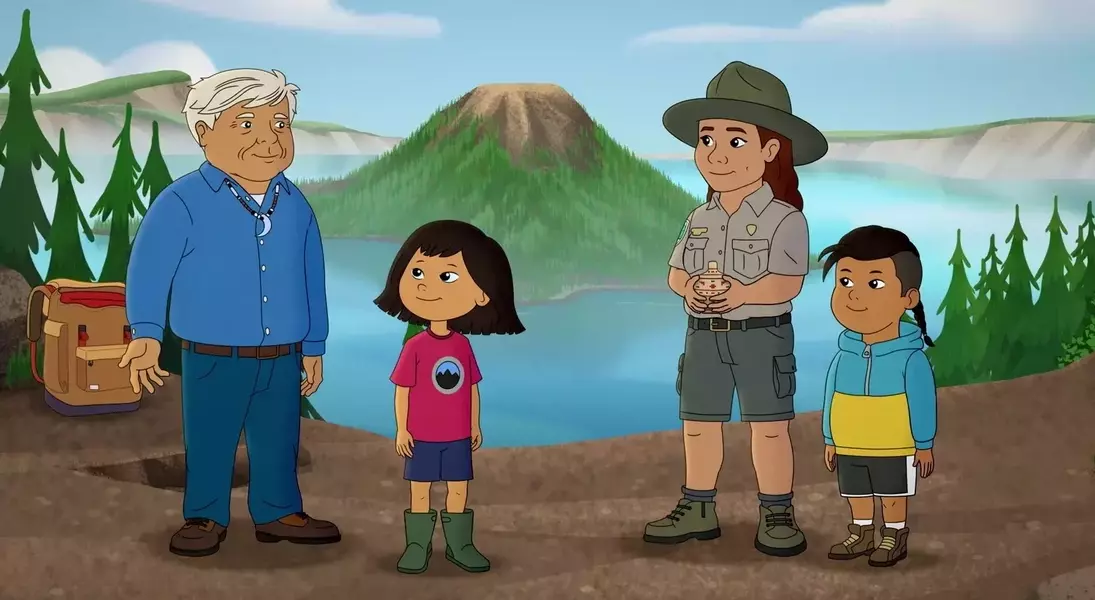



"Molly's Epic Adventure" offers a profound and engaging exploration of Indigenous cultures, demonstrating how a children's television series can effectively promote empathy, community values, and environmental awareness. The miniseries, featuring an Alaska Native protagonist, takes viewers on a cross-country journey, highlighting the rich traditions and contemporary lives of various Native American and Native Hawaiian communities. Through collaborative storytelling and visually distinct animation, the show emphasizes respect for cultural knowledge and the land, teaching young audiences that true strength lies in collective effort and interconnectedness rather than individual heroism.
The series stands out by moving beyond stereotypical portrayals, presenting Indigenous peoples as vibrant, living cultures with invaluable lessons for everyone. It champions the idea that knowledge is shared across generations and communities, fostering an environment where every member has a significant role to play. By immersing viewers in diverse cultural landscapes and narratives, "Molly's Epic Adventure" not only entertains but also educates, encouraging children to appreciate different ways of life and to understand their own place within a larger, interconnected world. The show’s emphasis on patience, relationships, and careful consideration reinforces positive values, making it a compelling and impactful viewing experience for families.
Exploring Indigenous Cultures Through Molly's Journey
"Molly's Epic Adventure," a compelling new miniseries from PBS KIDS, centers on Molly, an Alaska Native girl, and her Grandpa Nat as they embark on an extensive journey across the United States. This five-episode special, launched during Native American Heritage Month, serves as a dynamic educational platform, immersing young viewers in the rich diversity of Indigenous communities. The narrative transcends typical children's programming by showcasing not just individual bravery but the collective wisdom and resilience embedded within these cultures. As Molly and her grandfather traverse diverse landscapes, from the snow-covered terrains of Alaska to the deserts of New Mexico and the volcanic areas of Hawaiʻi, they encounter and learn from various Native groups, including the Lenape, Shoshone-Bannock, Klamath, Diné, and Native Hawaiian People. Each stop on their adventure introduces unique traditions, languages, and environmental philosophies, fostering a deeper appreciation for Indigenous heritage.
The series meticulously integrates lessons on community, empathy, and environmental stewardship into its engaging storylines. Molly's interactions with elders, friends, and new mentors highlight the importance of listening, respecting different perspectives, and understanding the interconnectedness of all living things. For instance, the show illustrates the significance of land stewardship with the Klamath, the principles of generosity and humility with the Diné, and the balance of awe and responsibility in Hawaiʻi. Through these experiences, young audiences witness how cultural narratives are deeply intertwined with the land, teaching them that landscapes are not merely backdrops but active characters that shape a people’s identity and values. The careful animation, with its distinct textures, colors, and patterns drawn from each region, visually reinforces these lessons, making every episode a unique cultural immersion. This approach ensures that children learn about Indigenous communities as vibrant, contemporary societies with valuable contributions to offer, rather than historical relics.
The Power of Collaboration and Community in Storytelling
The creation of "Molly's Epic Adventure" is a testament to the power of authentic collaboration with Indigenous communities, setting it apart as a groundbreaking children's program. From its inception, the production team prioritized building trust and working hand-in-hand with the tribes featured in the series. Creative producer Yatibaey Evans, an Alaska Native Atna Athabascan, emphasized that every stage of development, from initial brainstorming to final animation, involved direct input from Indigenous partners. This collaborative process ensured that the stories, traditions, and values portrayed were accurate, respectful, and reflective of the communities' lived experiences. The series meticulously navigates cultural protocols for sharing knowledge, earning the trust of tribal leaders who generously shared their sacred stories and histories. Executive producer Dorothea Gillim underscored the significance of this trust, acknowledging the considerable effort required to build these relationships and counteract pervasive stereotypes that often relegate Native peoples to the past.
This profound commitment to collaboration enriches the narrative, allowing the show to present Indigenous cultures not as exotic curiosities but as vibrant, evolving societies. The stories Molly encounters are more than mere information; they are sources of sustenance, connecting generations and modeling care. The series intentionally avoids portraying a single "lone hero" scenario, instead emphasizing that collective effort and community support are crucial for solving challenges and preserving cultural heritage. This central principle teaches children that strong leaders are good listeners, and that wisdom is shared horizontally among elders, friends, and even children. By showcasing cross-cultural friendships and intergenerational relationships where every individual's contribution is valued, "Molly's Epic Adventure" instills a powerful message about empathy, interconnectedness, and the importance of community. The show's visually rich and engaging storytelling, combined with its strong educational impact on young viewers, makes it an exemplary model for promoting cultural understanding and fostering a sense of collective responsibility.
